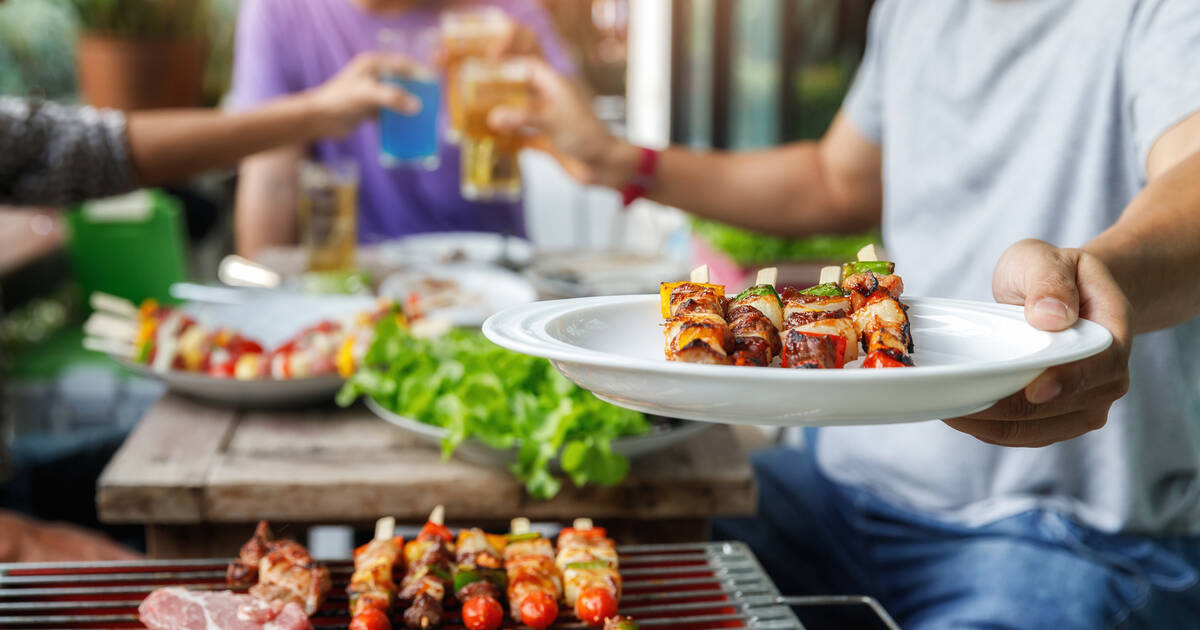Grill grates may rust or become extremely sticky with time, making it nearly impossible to remove food in one piece. When you try to pry food off a sticky grate, it starts to dry out and lose juice. But this is not the only way to grill. Seasoning your barbecue grates will solve this issue.
Grates that have been seasoned eliminate impurities, fend off rust, and close pores to prevent food from adhering. Seasoning your food both before and after you grill will simplify cleanup and improve the flavor of your dish. Some claim that seasoning the grate after washing removes the natural flavors of previous meals. The benefit of cleaning the grate first, though, is that seasoning can be applied more uniformly and will last longer.
Table of Contents
Conduct a top-to-bottom examination
Check your grill thoroughly for any issues if it hasn’t been used for several months. Start by checking for any rust indicators, especially if your grill has been outside all winter (metal exposed to the elements is more prone to this corrosion). Examine your grill for any insects or pests that may have crept in throughout the winter if it has been covered or kept in a garage. On gas grills, it’s crucial to inspect the fuel line. Check it visually for cracks, then perform the soapy water test. Wash the line and the connections with soapy water. When the gas is running, if you notice bubbles, tighten your connections or replace the line.
Wash Inside and Out
There are a lot of parts and sections in your gas barbecue. With a wire brush, start by clearing out the debris from the flame tamers (which are directly above the burners). Once the flame tamers are removed, inspect the burners for obstructions. Simply use an up-and-down motion with a stainless steel wire brush to clean the portholes. In the off-season, insects frequently settle in burner tubes. If the tubes are removable, you can either clean the inside with a long, flexible brush or spray water through them with a garden hose. Reattach the tubes after making sure they are dry. To avoid deadly grease fires, check that the greased pan is clean next. Take a look at this before the season begins and after each few BBQs are held to prevent overflow.
Make sure to remove any ashes and unburned charcoal from the ash catcher and bowl of a charcoal grill.
Clean up the grate.
Any remaining food has now been scorched, therefore it’s time to throw it away. Karmel advises scrubbing with an orange-sized ball of crumpled foil held in a set of long-handled tongs. That’s a particularly sensible choice for folks who are concerned about wire brushes’ wayward bristles, but if you have a metal brush you can rely on, by all means, use it. Raichlen advises searching for a wire brush with bristles anchored in a coil of twisted wire in his book Project Fire. The 12-inch Weber grill brush, which was rated as the best grill brush by America’s Test Kitchen, is appropriate. ATK also appreciated how cleaning in between the grate’s bars was made simple by its triangular design. This phase combines cleaning and preparation and is rather debatable. Before adding food to the grill, several grilling authorities advise oiling the grate. Some claim that the oil residue can accumulate and make food stick.
If you’re oiling the grates, hold a wad of oiled paper towels in your trusty pair of tongs and brush the grates while the grill is still on high heat. Similar to adding fat to a pan on the stovetop, this will collect any food particles you didn’t scrape off and oil the grates to prevent food from sticking. Make sure the oil you use can withstand high heat. Raichlen claims grapeseed and the cheaper canola are good bets.
Heat it again. Karmel advises that you proceed in the same manner as when you first lit the grill after you’ve finished cooking. After around 10 minutes of preheating, scrub. America’s Test Kitchen advises placing an upside-down disposable roasting pan on the grates of a charcoal grill to increase heat and aid in burning off the food. If there is a significant amount of food still on the grates, Karmel advises letting the grill run for 30 to 40 minutes, “or until all of the food on the grates has converted to a white-gray ash.”
The Seasoning of Your Grill in Two Simple Steps
Step 1: Apply high-heat cooking oil to the grill grate’s surface before lighting it. The best oils to use are canola and peanut oil, but you can also use coconut oil or vegetable oil from a spray can.
Step 2: Using a paper towel to wipe away any extra oil, turn the grill to high and let it run for 15 to 20 minutes, or until the oil begins to burn or smoke. The grate should turn dark by the end.
Advice: Allow your grill to cool down after each use. Using a brush, remove any food debris from the grates. Apply a thin layer of high-heat frying oil next.
